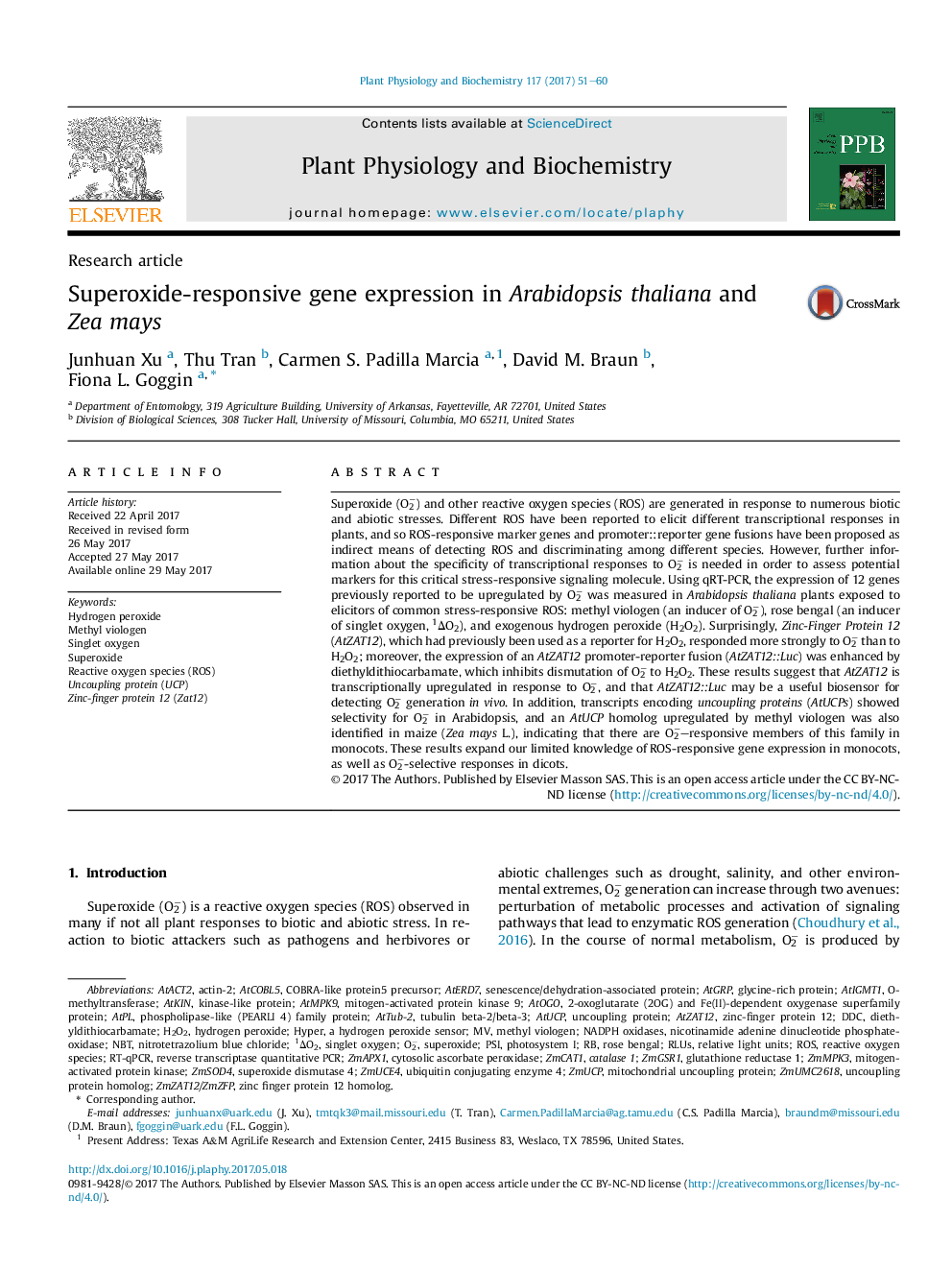| کد مقاله | کد نشریه | سال انتشار | مقاله انگلیسی | نسخه تمام متن |
|---|---|---|---|---|
| 5515568 | 1541904 | 2017 | 10 صفحه PDF | دانلود رایگان |

- Of 12 genes previously reported to be induced by O2â in Arabidopsis, only 6 were selective for O2â.
- Of the genes with the highest selectivity for O2â, AtZAT12 had the highest absolute expression.
- Expression of a AtZAT12::Luc reporter was reduced by an inhibitor of superoxide dismutase.
- Of Arabidopsis genes with highest selectivity for O2â, 3 (AtUCP1, AtUCP2, AtZAT12) had maize homologs.
- One AtUCP1 homolog in maize (GRMZM5G852877) was significantly upregulated by methyl viologen.
Superoxide (O2â) and other reactive oxygen species (ROS) are generated in response to numerous biotic and abiotic stresses. Different ROS have been reported to elicit different transcriptional responses in plants, and so ROS-responsive marker genes and promoter::reporter gene fusions have been proposed as indirect means of detecting ROS and discriminating among different species. However, further information about the specificity of transcriptional responses to O2â is needed in order to assess potential markers for this critical stress-responsive signaling molecule. Using qRT-PCR, the expression of 12 genes previously reported to be upregulated by O2â was measured in Arabidopsis thaliana plants exposed to elicitors of common stress-responsive ROS: methyl viologen (an inducer of O2â), rose bengal (an inducer of singlet oxygen, 1ÎO2), and exogenous hydrogen peroxide (H2O2). Surprisingly, Zinc-Finger Protein 12 (AtZAT12), which had previously been used as a reporter for H2O2, responded more strongly to O2â than to H2O2; moreover, the expression of an AtZAT12 promoter-reporter fusion (AtZAT12::Luc) was enhanced by diethyldithiocarbamate, which inhibits dismutation of O2â to H2O2. These results suggest that AtZAT12 is transcriptionally upregulated in response to O2â, and that AtZAT12::Luc may be a useful biosensor for detecting O2â generation in vivo. In addition, transcripts encoding uncoupling proteins (AtUCPs) showed selectivity for O2â in Arabidopsis, and an AtUCP homolog upregulated by methyl viologen was also identified in maize (Zea mays L.), indicating that there are O2â-responsive members of this family in monocots. These results expand our limited knowledge of ROS-responsive gene expression in monocots, as well as O2â-selective responses in dicots.
Journal: Plant Physiology and Biochemistry - Volume 117, August 2017, Pages 51-60